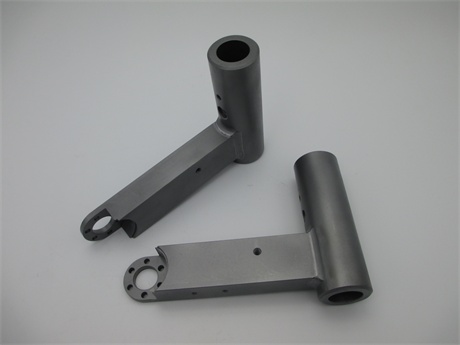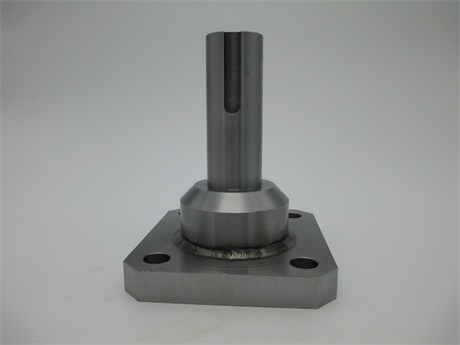The data shows that nearly 70% of consumers in China give priority to car safety when buying a car. Therefore, Toyota, the world's largest auto company, has been pursuing the "TODAY for TOMOR ROW" concept, and has carried out technological development activities around the three axes of environment, safety and comfort, and pursued the actual safety of automotive products. In the eyes of Toyota professionals, car safety is a comprehensive concept, not simply the thickness of the steel plate and the number of airbags. The key to Toyota's safety quality lies in Toyota's unique GOA body patented design technology.
And Chinese consumers are more sensitive to the issue of car safety. I often receive questions from fans and netizens about the safety of German cars and Japanese cars. "They usually think that Japanese cars are thin." Some people will say, by hand, press the hood, door, fender and other parts of the Japanese car, "press a pit."
The safety is not as good as the German car, which is the most important source of many people's bias against Japanese cars. The biggest rumor area is on the Internet, because the netizens have the same problem. When the German and Japanese cars of the same level collide, why are the injured cars often Japanese? When traffic accident scene photos are often circulated on the Internet, many people form a concept: “Japanese steel cars are thin, not bumped, and unsafe.†Consumers have the concept that German cars focus on the safety and stability of vehicles. Sex and passability, the body plate is thick and resistant to deformation. When the German car collides with other cars, the amount of deformation is small, which can fully guarantee the living space of the internal occupants. However, the phenomenon that Japanese cars are often easily deformed and deformed has caused consumers to form a distrust of the "safety" of Japanese cars over time.
In this wave of models that teach Japanese safety issues, the first thing to do is Toyota, which is back to the idea of ​​how Toyota sees safety. In TMEC, there are a large number of crash test bodies. Many tests have proved that one of the biggest misunderstandings is that when the car body is deformed, it does not indicate that the Japanese car is not safe. Take Toyota's car for example. Toyota uses GOA global quality. The evaluation system is to verify the safety of the vehicle body and ensure the safety of the cockpit. The A-pillar, B-pillar and C-pillar are guaranteed not to be deformed, but other parts are allowed to be deformed, such as the hood and the trunk. Because in the event of a collision, the deformation can quickly absorb energy and ensure the safety of the occupants in the cockpit.
In fact, it is also the core and most mainstream safety cognition in the world. The safety of the car is not the hardness. The first consideration of car safety is to protect the safety of drivers, pedestrians and other vehicle personnel. Deformation is not a low standard for Toyota car cutting and material reduction, which is itself part of Toyota's safety design philosophy. The data can be clearly indicated. When the vehicle's overall weight is reduced by 10%, the fuel efficiency can be increased by 6% to 8%. The car body accounts for about 30% of the total mass of the car. Under no-load conditions, about 70% of the fuel consumption is used in the body quality. Saving energy and improving safety factor, ULSAB (ULTRA LIGHT STEEL BODY AUTO) has always been the ambition of the Japanese automotive industry. High-strength steel sheets with high strength, thin thickness and absorbing collision energy are ideal materials for the manufacture of ULSAB. In 1999, the steel plate for automobiles was only 20% HiTen, and by now, this proportion has grown to 50%.
In this regard, almost all media in the country believe that although many people are keen to buy German-style cars with thick iron and heavy weight, in the world, the lightweight car body promoted by Toyota cars is the trend of future car development.
Of course, this is nonsense. The so-called new materials are not stronger and lighter.
SGI' s welding and fabrication services
- The welding and fabrication parts are custom made only, not in stock.
We can produce based on your drawings or samples.
- We will sign NDA( Non-disclosure Agreement) with you if you need;
- Supplying Capacity: 200,000pcs monthly; Even one piece of welding and fabrication part of order are welcomed.
|
Available Material ( metals) |
Available Material ( plastic) |
|
Alloy ( aluminum, zinc, etc.) |
ABS, PC, ABS, PMMA (acrylic), POM |
|
Brass, bronze, beryllium, copper |
PA ( nylon), PP, PE, TPO |
|
Carbon steel, stainless steel, SPCC |
Fiberglass reinforced plastics, Teflon |
|
Processes |
Surface treatment ( finish) |
|
CNC machining(Milling/ Turning), Grinding |
High polish, brush, sand blast, anodize |
|
Sheet metal stamping, bending, welding, assembly |
Plating (nickel, chrome), powder coat |
|
Punching, Spinning |
Painting, silk screen, pad printing |
|
Equipment |
Quality control |
|
CNC machining centers |
CMM , automatic projector, Altimeter |
|
Cnc Turning centers/ Lathes / Grinders |
All kinds of gauge, hardness tester, caliper. |
|
Punching, Spinning and Hydraulic tensile machines |
Third party inspection available if required |
|
Lead time & Packing |
Application |
|
7~15 days for sample, 15~25 days for production |
Automotion industry / Aerospace/ Telecom equipment |
|
3~5 days via express: DHL, FedEx, UPS, TNT, etc. |
Medical / Marine / Construction / Lighting system |
|
Standard export carton with pallet. |
Industrial Equipment & Components, etc. |



Welding And Fabrication Service
Steel Fabrication,Fabrication And Welding,Fabrication And Welding Parts,Welding And Fabrication Service
SG Industry (China) Co.,Ltd , http://www.sgindustrycn.com
